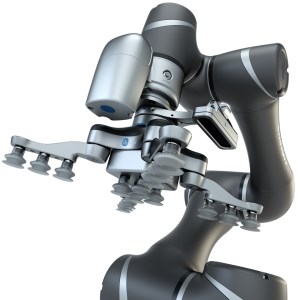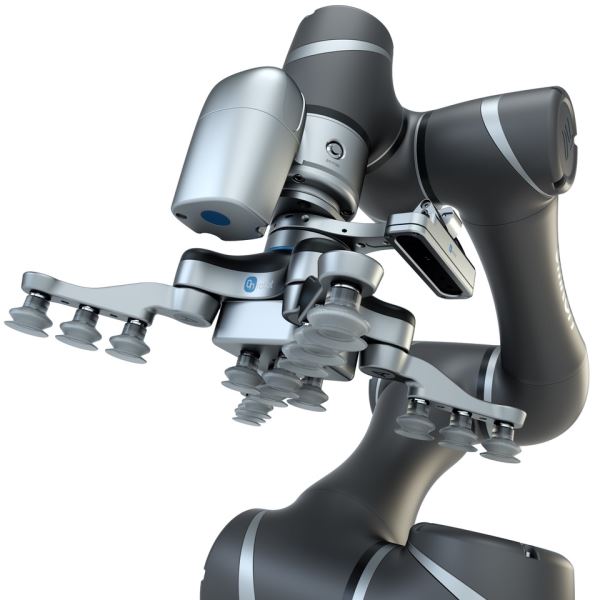Robotic arms are often tasked with picking items not presented in the same orientation, shape or size.
To provide consistent positioning, manufacturers frequently add fixtures, bowl feeders and other hardware.
This adds cost and complexity and often results in rigid applications that lack the ability to easily pick different objects or achieve quick changeover times.
CEO of OnRobot, Enrico Krog Iversen says most manufacturers want to eliminate complicated, bulky and expensive part feeders and fixtures.
But until now, vision systems have felt out-of-reach,” he says.
OnRobot’s new Eyes vision system changes all that.
Eyes takes a single image for calibration and part recognition and has automatic focus to work at different distances within the same application.
It is ideal for sorting a wide variety of objects or for CNC machine tending with metal parts that are defined by outer shape, as well as many other pick-and-place applications where orientation is important. Eyes also offers depth perception within its affordable and easy-to-deploy 2.5D vision.
The 2.5D Eyes vision system is rapidly emerging as the perfect technology for vision-guided applications, says Iversen.
“Compared to 2D it adds not only length and width but also height information for the specific part, which is ideal when objects may vary in height or if objects must be stacked.”
Eyes can be easily mounted on the robot wrist or externally, and integrates seamlessly with all leading collaborative and light industrial robot arms through OnRobot’s One System Solution, a unified mechanical and communications interface based on the company’s Quick Changer, now an integrated part of all OnRobot products.
The new vision system directly interfaces with other OnRobot devices making it is very easy to use Eyes together with any of OnRobot’s grippers.
With a dual setup, using a dual Quick Changer, the gripper’s tool centre point (TCP) can be automatically configured by Eyes, eliminating any potential conflict between different software packages from different suppliers.
The optimal mounting depends on the application.
With Eyes mounted externally, users don’t have to worry about cables running alongside the robot and the ability to optimise cycle time. Eyes can take the picture and process it while the robot is doing another operation.


